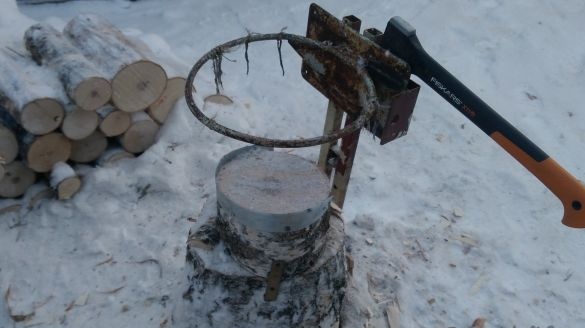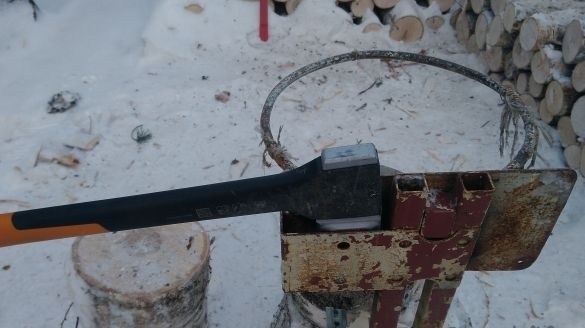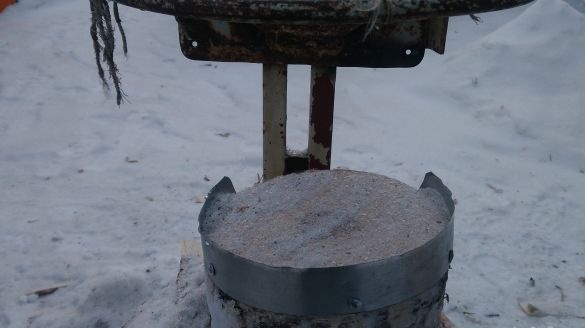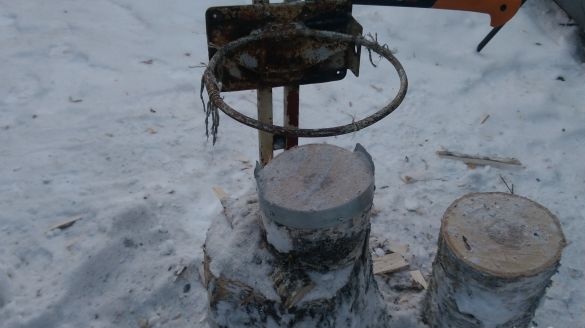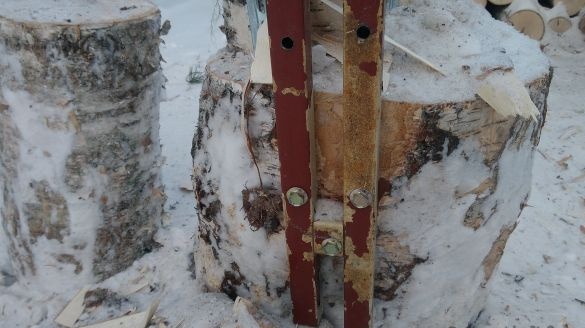I live in a house with stove heating, and therefore logging is my annual job. Sawing logs into chocks, chopping logs and stacking in logs - all this is familiar to me firsthand. This can scare away a lot, they say a lot of work, it takes a lot of time, it’s easier to buy ready-made firewood or switch to fuel briquettes, but to be honest, I personally enjoy this whole process involving firewood. Light frost, fresh air, moderate exercise, which can be more beneficial for health ... However, over the years, I even want to alleviate the usual work somehow, and here various pribludy and gadgets appear. When you chop wood, you have to periodically bend over the logs, picking them up from the ground, where they fell from the deck after another blow with an ax or cleaver, in order to send them to a bunch of ready-made logs or for further chopping. All these bows reduce labor productivity, and for the back is tiring. It would be nice if the logs after the impact with the ax would not scatter to the sides, but remain in a place where you could continue to work with them or without straining your back send them to the right pile of firewood. Somewhere on the net, I once saw that for this you can use old tires from the car, stacked on top of each other so that the deck on which the chocks are put, would stand inside these tires. The topmost tire should be taller than the deck surface. Thus, chock inserted into the center of this
fixtures, after it was split, resting on the inner edges of the tire does not scatter around, but remains in place.
This design has a drawback that I did not like. In the process, under the influence of blows, the tire constantly tried to jump out of its place, and it had to be corrected. You can of course fix it somehow, but at the same time, such a design property as mobility and ease of manufacture is lost.
This season I made my own version of a device that facilitates splitting firewood.For him, it came in handy for me from where the basketball hoop came from, a metal profile and several self-tapping screws, capercaillie, a strip of tin-galvanized steel, and of course, a welding machine. After welding-assembly, the design is as follows.
During operation, it turned out that there was a place for an ax, so that it would not lie on the ground.
In order that the chopped logs would not slide off the log block, a strip of tin is fixed around the circumference.
the little block itself is fixed by corners to the deck.
The whole structure is fixed with self-tapping screws.
I would be glad if this idea is useful to someone.

